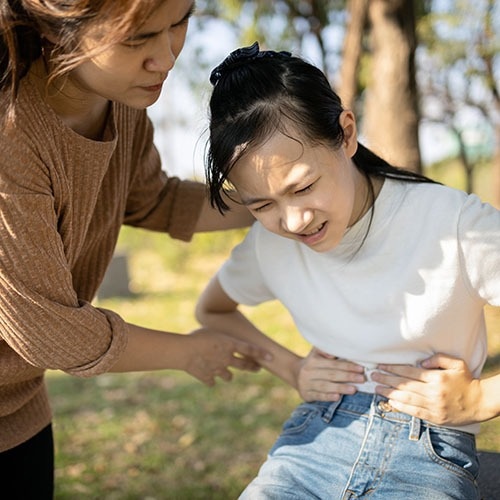Reviewed by Danielle Ellis, B.Sc.Mar 16 2023
Whether it’s headaches, abdominal pain, or unrelenting joint soreness, up to a third of young people in Australia experience chronic pain.

Image Credit: University of South Australia
Now, a world-first study from the University of South Australia is providing valuable insights about how young people understand chronic pain, potentially helping thousands of sufferers to better manage their symptoms and long-term wellbeing.
Lead researcher and pain expert, UniSA’s Dr Hayley Leake, says understanding what young people think about pain can help debunk pain myths and identify new treatment pathways.
What people think about where their pain is coming from, matters, but unhelpful beliefs about pain can stop people from accessing the best care.
Optimal care for chronic pain involves movement and psychological therapy. Yet these treatments can seem counter-intuitive if you think your pain means tissue damage.
If we can identify what young people think about pain, we can figure out which beliefs are helpful, and which are not. Then we can use this knowledge to make better pain education for young people, so they understand why to engage in best-practice treatments.”
Dr Hayley Leake, UniSA
The study was conducted as part of a larger observational study (of children aged 11-17 years), with long-term interview follow-ups (six years later) of these now young adults with a history of chronic pain in childhood. Of the original cohort, 229 completed the six-year follow-up study, with 189 (82.5 per cent) still reporting current chronic pain.
Researchers found that young people tended to make sense of chronic pain by explaining it as:
- something that is wrong with their body
- associated with an injury that has not healed
- connected to nerves ‘firing’ when they should not
- linked to an overactive stress system
Leake says while some of the themes provide helpful ways of thinking about pain, others capture misconceptions about how pain works which can then create barriers to them getting treatment.
“It is important to challenge beliefs about pain that don’t align with modern pain science,” Dr Leake says.
“In this study we can see that some young adults believe that pain means their body has an unresolved tissue injury. This is not necessarily the case, as pain can persist when nerves become hypersensitive, despite no injury to body tissue.
“One way we explain this to young people is by comparing chronic pain to computer issues –the problem is with the software, not the hardware.
“Replacing unhelpful beliefs about pain with helpful ones is an important part of recovery. In our study, some young people were able to describe helpful beliefs that link chronic pain with an altered nervous and stress system.
“By learning about the biology of pain, nerve hyper-sensitivity, and the role of stress, we can help people understand why stress management therapies can help, and why exercise is a good idea.
“Educating teenagers and young adults – as well as their parents and caregivers – about chronic pain and talking to them in the words and phrases they use and understand, is a first step to change.
“We know when adults with chronic pain learn about pain, they improve more than those who don’t learn about pain, and that they find pain education valuable.
“By increasing awareness and understanding of chronic pain, we to hope provide better supports to teens and young adults, so that they receive the necessary care and support to live their lives to the fullest.”
Researchers are now creating a toolkit to spread awareness to share on social media and hopefully in schools.
Source:
Journal reference:
Leake, H. B., et al. (2023) How does pain work? A qualitative analysis of how young adults with chronic pain conceptualise the biology of pain. European Journal of Pain. doi.org/10.1002/ejp.2069.